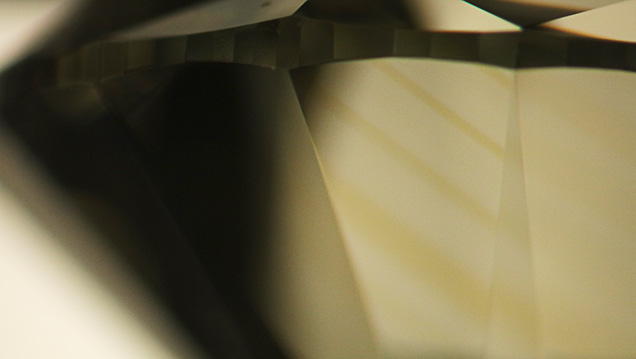Uncommon Parallel Color Zoning in a Chameleon Diamond

As their name suggests, chameleon diamonds are a kind of thermo- and photosensitive colored diamond that change hue with gentle heating or when left in darkness for an extended period of time. A diamond must meet the following criteria to qualify for chameleon testing at GIA: a green or greenish component in the bodycolor, yellow or orange fluorescence under both long-wave and short-wave UV light, and persistent yellow phosphorescence following exposure to short-wave UV light. After heating or an extended stay in darkness, the green component of the stone disappears and gives way to a yellowish orange hue. The mechanism responsible for this change is not well understood.
The infrared spectrum of chameleon diamonds typically shows them to be type Ia with moderate nitrogen concentration. The dominant feature in the visible-light spectrum is a broad absorption band centered at 480 nm. Viewed face-up, most diamonds appear to have an even bodycolor to the unaided eye, but magnification reveals that the vast majority of diamonds with the 480 nm band defect show distinct color zoning with an amorphous distribution of color.

GIA’s Carlsbad laboratory recently graded a Fancy Light grayish greenish yellow 1.06 ct round brilliant chameleon diamond that displayed this typical color zoning, but in a very distinctive pattern. Rather than the usual formless color distribution, the green color in this diamond was neatly confined to parallel bands (figure 1). The color-change effect caused by heating was correspondingly limited to these bands (figure 2). It is worth noting that the characteristic chameleon fluorescence and phosphorescence of this diamond were likewise confined to parallel zones as revealed by DiamondView imaging (figure 3).

Although parallel features are not rare in diamonds due to the inherent planes of weakness within their crystal structure, it is uncommon to see this pattern in chameleon stones. We took the opportunity to capture video of the chameleon effect in this distinctive stone while heating it in real time, something GIA has not previously endeavored.



